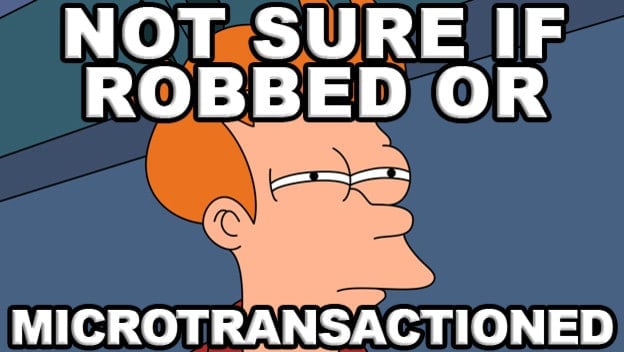The stories come up all the time. “Child spends thousands $1,200 on Fortnite.” “Runescape spends $90,000 in-game.” “$222,000 spent on Transformers: Earth Wars.” Every few months, we hear a microtransaction horror story. Kids or whales, people who invest a lot into their mobile games, kick in tons of money, and it makes big news. We go on and on about what a big deal it is. But, maybe we don’t really think about this means. We might not realize how easy it could be to go all in with such a game and make that kind of splurge ourselves.
The obvious reason this can happen can be chalked up to the innocence of youth and a guardian not enabling some sort of failsafe to prevent purchases. While teenagers obviously have an idea of the value of things, kids just don’t get it. They see an item they want and go for it. They lack the sort of impulse control more mature people do, which can lead to extravagant purchases. That, coupled with bad game design decisions that make it possible for these kids to make major purchases without some sort of protection, lead to the outrageous stories that have us shaking our heads.
What about the more outlandish purchases from adults? Well, these can have more heartbreaking implications that people may not think about. Some of these sorts of purchases can come from a place of addiction. If someone has an addictive personality, they could find themselves compelled to keep paying money until they get that big “score” they want or need. Other mental health issues could also leads to spending unhealthy amounts of money on a game. If someone’s mental state isn’t ideal, maybe they would kick in. There have been times when, if I’m having a bad day, I might go ahead and spend $5 on a game like Fire Emblem Heroes to cheer myself up. It is a sense of immediate gratification.
Could developers and publishers be doing things to help with these issues and make them better? Absolutely. Limits could be in place on spending. Companies could offer some sort of restriction, only allowing a certain monetary limit each month. They could also offer a subscription of sorts, one that gives people a certain tangible benefit, one that is really a good deal, so you don’t have this urge to keep spending. Better telegraphed odds on gachas or gachas that don’t have a 3% chance of giving you the “best” item and instead make it a 10% chance of something would really help.

Especially since we’re seeing some games make these sorts of changes. Mario Kart Tour has a subscription model. $5.99 gets you what is essentially a sort of monthly season pass with its own special rewards and challenges. Playing means you earn more gems and better racers. Dissidia Final Fantasy: Opera Omnia has all sorts of community events and raids that give people a chance to get great rewards, sometimes even items you’d normally get with money, for free. Pokemon Go has Community Day boxes where you can get more premium items for a cheaper price on certain days.
There are a lot of reasons why people could spend a lot in games. Part of it can happen because companies don’t have failsafes to help prevent obscene spending. Others can happen because of other issues. While some games are getting better, it’ll likely be a while before we start seeing major changes.
